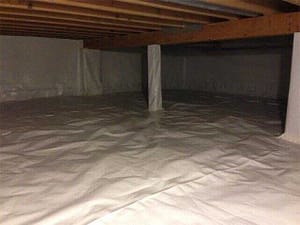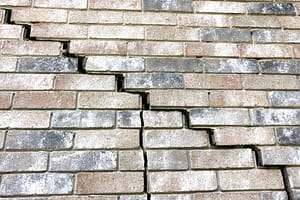The 45-Second Trick For Best Basement Waterproofing
Table of ContentsBest Basement Waterproofing Fundamentals ExplainedThe Ultimate Guide To Best Basement WaterproofingNot known Facts About Best Basement WaterproofingExcitement About Best Basement WaterproofingThe Of Best Basement Waterproofing
AdvantaClean's experienced professionals and technicians will certainly situate the water resource. If wall surface or piece fractures are existing, we will certainly infuse polyurethane and epoxies right into the fractures and seal the compromise, preventing further moisture from entering.
If there's condensation on the outside of the aluminum foil, you have high moisture in your basement. If the aluminum foil has condensation on the inside surface area (next to the wall), the dirt around your house might be naturally damp from a high water table or bad dirt drain.
You can waterproof just your interior wall surfaces, which may resolve the problem. Or you can waterproof your exterior walls, which is a much better bet but more expensive. Right here's the scoop on the different kinds: These thick coverings are cement-like. Once they dry, they stick completely to concrete and stonework wall surfaces (Best Basement Waterproofing).
More About Best Basement Waterproofing
Concrete water-proof layers can not be applied to previously painted surface areas; inspect the tag. Known as densifiers, they are ideal only for walls that have not been repainted or sealed.
But you brush, roll, or spray it on a lot more thickly one gallon covers simply 75 square feet, not the 300 square feet normal with basic paint. Water-proof paint is fine for DIY application. You can use it over painted surfaces, and paint over it once it's cured (one gallon expenses $37).
It can set you back $10,000 to $15,000, depending on the work needed. Outside waterproofing includes excavating all around your house to the full depth of the structure walls, after that setting up a waterproof coating or membrane layer topped by water drainage panels. The panels supply a simple path for water to stream down to an outside French drainpipe at the bottom of your structure.
We have actually all been caught in a storm without umbrella or raincoat (Best Basement Waterproofing). And it's always a recipe for calamity: everything's damp, your hairdo is messed up, and points are getting mildewy. A basement without waterproofing is type of like that. Minus the wrecked hairdo component. Your cellar does not wish to undergo a downpour without appropriate defense just as long as you do not intend to.
7 Simple Techniques For Best Basement Waterproofing
But if you've done your research, you 'd recognize there are 2 kinds of waterproofing: inside and outside. It can get puzzling what they both mean, which one's a much better investment, and what will actually keep the water out. Do visit here not fret, we created this blog to conveniently specify both techniques for you and go over the pros and cons of each.
Exterior waterproofing is a waterproofing approach that includes securing your home from the exterior. The foundation wall surfaces are then cleansed, secured, and covered with a waterproof membrane layer or sealant.

About Best Basement Waterproofing
It's a more involved process Click This Link that calls for digging up your yard, which is costly and taxing. Outside waterproofing involves removing whatever surrounding your house, consisting of porches, driveways, walkways, landscaping, a/c devices, important source decks, and more. If any of the work was done incorrectly and water is still entering your basement, there isn't much you can do to fix or fix it.
Inside basement waterproofing includes waterproofing from the inside. Any water that leaks right into your cellar is redirected before it touches your floor.
It's an effective technique to water resistant your cellar - Best Basement Waterproofing. The disadvantage of interior basement waterproofing mostly involves the installation process. This technique needs saved things, furnishings, and integrated shelving or closets to be moved from touching the basement walls. And during installation, your basement can't be used. The most significant difference between the two techniques is this: Outside waterproofing is a preventative option and indoor waterproofing is a rehabilitative remedy.
Not known Incorrect Statements About Best Basement Waterproofing
In conclusion, outside and interior basement waterproofing are both efficient methods of protecting your home from water damages. Exterior waterproofing develops an obstacle that prevents water from entering your home, while indoor waterproofing redirects water that does enter your home. And it's important to keep in mind that exterior waterproofing is a pricey and disruptive installment process when contrasted to interior waterproofing.
Whichever technique you choose, make sure you select a trustworthy and trustworthy specialist for the job. If you have any type of inquiries about basement waterproofing, please get to out to us.
You can submit our type below, start a chat in the bottom right-hand edge, or call us at 1-800-827-0702.